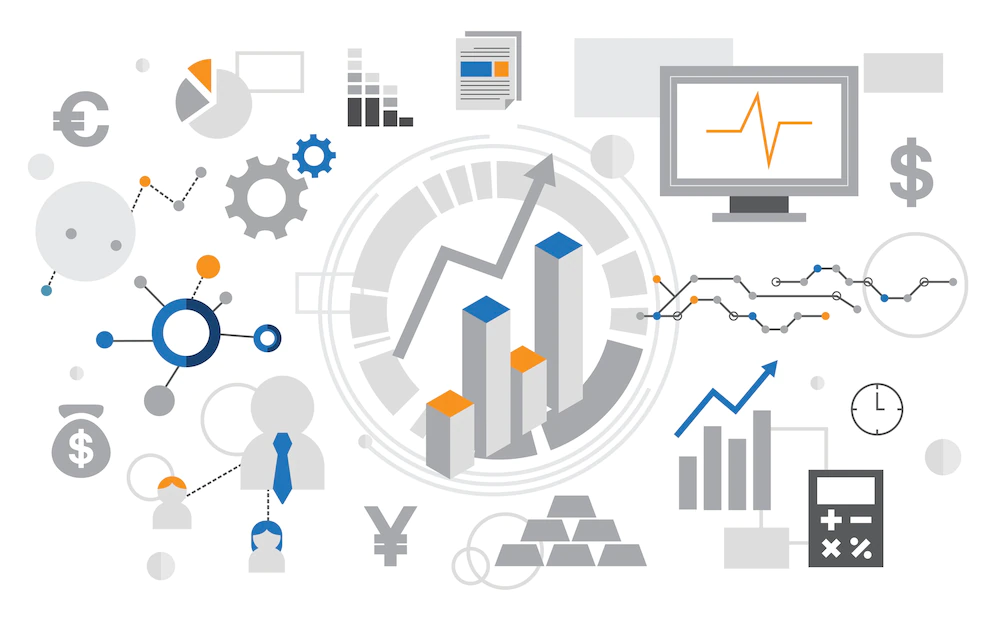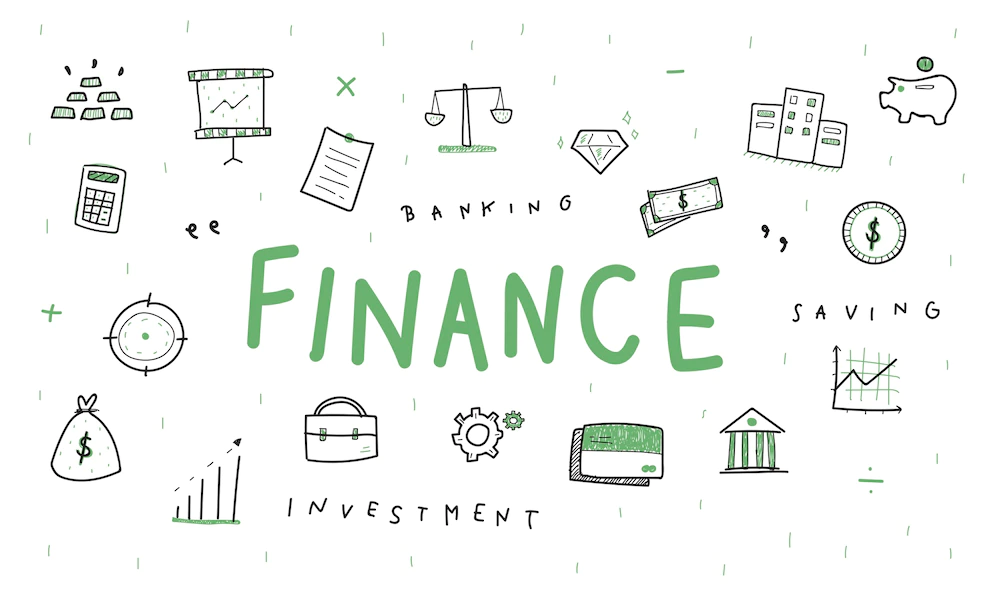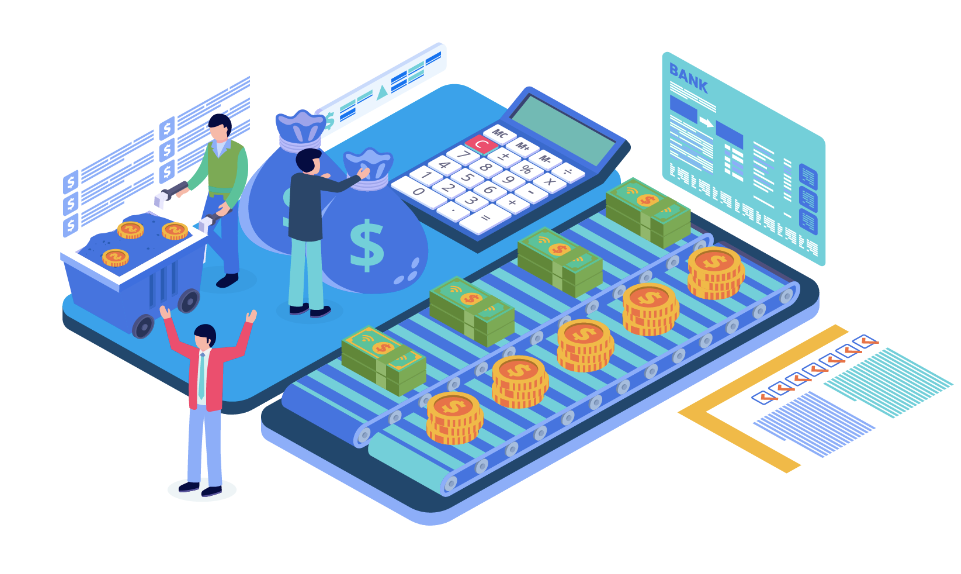Last Updated on November 28, 2025
Embedded finance
Embedded finance is the next big thing in the world of finance. If you’re unfamiliar with it, embedded finance is the process of embedding financial instruments into everyday objects and transactions.
Embedded finance is shaking the financial world by changing how financial services are distributed. Businesses that use integrated finance are not only giving their clients top-notch services but also increasing their bottom line.
Forbes has confirmed this with examples such as Shopify, which handled USD 14 billion in gross payments through its Shopify Payments Service in Q3 2020, and Uber, which handles 70% of its driver paychecks through Instant Pay.
Also, Read: What is Expense Management?

Image Credit: freepik.com
What is embedded finance?
Embedded finance is a term that describes the integration of financial services into everyday products and platforms. In other words, it is about making financial products and services more accessible and convenient for consumers.
This can take many different forms, but some common examples include in-app payments, peer-to-peer lending, and micro-insurance.
By making financial products and services more convenient and accessible, embedded finance has the potential to help millions of people around the world manage their finances more effectively.
The key benefit of embedded finance is that it makes financial services more accessible to consumers. Integrating these services into products that people are already using eliminates the need for customers to seek out separate providers.
This not only makes it easier for them to use these services but also makes it more likely that they will do so. As a result, embedded finance has the potential to greatly increase financial inclusion.
Studies predict that by 2029, India’s embedded finance revenues will have grown from US$4,801.8 million in 2022 to US$21,127.5 million.
According to predictions, the API expansion will drive unprecedented expansion in the financial services industry.
Suggested Read: What is Invoice Financing?
What is embedded payment?
In the past, making a payment often meant pulling out your wallet, fishing around for your credit or debit card, and swiping or inserting it into a card reader. In the same way, technology has evolved, and so have our payment methods. One of the latest payment processing innovations is embedded payments.
Embedded payments are a type of electronic payment that is integrated into a merchant’s software application. This payment allows customers to make purchases without leaving the merchant’s site or app.
Instead, they can enter their payment information and complete the transaction without ever having to leave the merchant’s site.
This payment is convenient for both merchants and consumers, and it helps create a seamless shopping experience.
In addition, embedded payments are often more secure than traditional online payments since they are not processed through a third-party processor. As a result, they offer an extra layer of protection for merchants and consumers.
Also, Read: What are Vendor Payments?

Image Credit: freepik.com
Embedded finance examples
Some people might not realize they’ve already used embedded finance in their everyday lives. Here are a few examples of how this type of financing is being used today:
1. Embedded payments
Embedded payments enable seamless payments within apps and platforms by integrating payment infrastructure. Payments were the first financial service to be incorporated into non-financial products.
Today, they are an important part of the value proposition of any e-Commerce app or SaaS platform, and end customers use this feature naturally on a regular basis.
With embedded payments, users can access a wide range of use cases, including in-game purchases in video games, payroll automation, e-wallet integrations in e-commerce apps, payments through educational ERPs, subscription-based payments in SaaS, and much more.
By using APIs to connect financial accounts to mobile apps for ACH payments, embedded payments give consumers the option to pay directly from their bank accounts while saving merchants on fees.
Related Read: What is Payroll Accounting?
2. Embedded cards
An embedded card is a physical or virtual credit or debit card linked to a user’s account on a merchant’s site or app. This type of card can be used for online and offline purchases.
Embedded cards are becoming increasingly popular as they offer many advantages over traditional credit and debit cards. For example, you can make peer-to-peer payments instantly with embedded cards and pay in foreign currencies without fees.
In addition, embedded cards offer a higher level of security than traditional cards, as they are not subject to the same type of fraud.
Lastly, embedded cards can track spending and budgeting, allowing users to see their transaction history in real time. Some of the most popular embedded card providers include Plaid, Stripe, and Square.
3. Embedded credit
The term embedded credit describes the integration of credit products into digital platforms that are not financial. As a result, users can apply for, obtain, and repay loans using the platform.
For instance, a client buying a household appliance on Amazon can change their order into an EMI at the point of purchase without leaving the website.
Alternatively, a customer could use a mobile app to apply for a loan and then use the same app to make repayments. This type of financing is particularly popular among millennials and Gen Z, as it offers a convenient and user-friendly way to access credit.
Some popular embedded credit providers include Affirm, Klarna, and Afterpay.
Also, Read: Corporate Credit Cards: Types, Benefits, Uses and Process
4. Embedded lending
Consumers don’t need to rush to the banks right now to get a loan. Numerous non-financial institutions have entered the financial sector to allow customers to obtain credit at the time of purchase. It does away with the need for intermediaries, drawn-out procedures, and a ton of paperwork.
For instance, Instant Settlements for Marketplace Sellers is an example of embedded lending whereby marketplace sellers can receive loans based on their sales data fetched directly from the marketplace platform utilizing safe and secure APIs in seconds.
5. Embedded insurance
The term “embedded insurance” refers to the practice of including insurance in the cost of a commodity or service. For instance, Tesla provides motor insurance as a component of in-store and online transactions.
Integrating insurance solutions with mobile applications, websites, and other partner ecosystems is made possible by the transactional APIs and technology embedded insurance businesses provide.
Instead of developing a sophisticated capability inside, platforms prefer to collaborate with external insurance providers. However, insurance firms use outmoded tech stacks that are challenging to integrate.
Companies that offer embedded insurance infrastructure give customers a simple method to connect with insurance providers via their tech stack.
6. Embedded investments
A lot of investors may not know what kinds of investments are safe. But it is an important part of managing money well. Therefore, making integrated investments makes sense because it streamlines the investment process by providing a single platform for investing and money management. It is a safety feature that enables customers to invest in various financial assets without leaving the platform.
For example, Stash is an investing app that allows users to start investing with as little as $5. It also offers a portfolio of ETFs (Exchange-Traded Funds) to choose from. Some popular embedded investment providers include Acorns, Stash, and Robinhood.
Also, Read: What is Financial Reporting?

Image Credit: freepik.com
Benefits of embedded finance
There are many benefits associated with embedded finance. As a result, it has become more popular in recent years:
Digital platforms
- Maximizes customer lifetime value.
- Maintains customer loyalty.
- Adds another revenue stream to companies.
- Makes them stand out from their competitors.
- Increases control over payment processes for companies.
- Reduces costs by removing several middlemen.
- Allows them to offer a more personalized service based on insightful customer data.
Financial institutions
- Provides them with access to a vast new customer base.
- Makes their business more profitable.
- Improves the management of loan lifecycles.
- Resulting in greater savings for customers.
- Helps them develop deeper relationships with their customers.
- Reduces the risk of fraud and financial crimes.
Users
- Provides greater access to financial services.
- Provides a better customer experience.
- Simplifies onboarding procedures by eliminating middlemen.
- Eliminates the need to remember multiple login credentials.
- Makes it easier to compare different financial products.
- Allows users to make informed decisions about their finances.
- Offers transparency and control over their data.
Also, Read: 5 Steps to Automate Expense Approval Process

Image Credit: freepik.com
What is driving embedded finance?
Several factors are driving embedded finance, including:
a) The popularity of digital platforms
Over the past decade, we have seen a dramatic increase in the number of people using digital platforms. This is because they are convenient, user-friendly, and offer a wide range of services.
b) The rise of the sharing economy
The sharing economy is another factor driving embedded finance. This is because it relies on peer-to-peer transactions, which are only possible if there is a way to quickly and easily transfer money between two parties.
c) The growth of mobile commerce
Mobile commerce is another trend that is driving embedded finance. This is because it allows users to make transactions using their mobile devices, which are always connected to the internet.
d) The rise of fintech
Fintech is another factor that is driving embedded finance. This is because fintech companies are developing innovative new technologies that make it easier for people to access financial services.
Quick Read: 5 Simple Ways to Improve Invoice Processing
Who are the customers of embedded finance?
Embedded finance is a rapidly expanding and crucial area of the global financial services sector. It offers funding options to support the growth and expansion of non-financial corporations, including consumer goods brands, retailers, telcos, major tech and software businesses, automakers, airlines, and insurance firms.
Additionally, embedded finance enables financial institutions (including banks, fintech, financial services providers, remittance businesses, and others) to supply their clients with cutting-edge, customized goods and services.

Image Credit: freepik.com
What are the opportunities for embedded finance?
Opportunities for Embedded Finance are growing as the industry matures. Here are a few examples:
1. Increased access to financial services
One of the primary opportunities for embedded finance is increased access to financial services. For example, many people who do not have a bank account can use a mobile phone to access basic banking services. Additionally, people who live in rural areas or other underserved communities may have greater access to financial services through embedded finance.
2. Improved financial inclusion
Another opportunity for embedded finance is improved financial inclusion. Financial inclusion refers to the ability of people to access financial services and products that meet their needs. This can include things like credit, savings, and insurance. By increasing access to financial services, embedded finance can help improve financial inclusion for people worldwide.
3. Greater financial literacy
Another opportunity for embedded finance is increased financial literacy. Financial literacy is the ability of people to understand and use financial products and services. By providing people with greater access to financial products and services, embedded finance can help increase financial literacy levels worldwide.
4. Lower costs
Another opportunity for embedded finance is lower costs. Many traditional financial institutions charge high fees for their products and services. However, because embedded finance relies on technology, it can often provide its products and services at a lower cost. This can help make financial products and services more affordable for people worldwide.
5. Increased efficiency
The fifth opportunity for embedded finance is increased efficiency. Traditional financial institutions can often be slow and cumbersome when providing their products and services.
However, because embedded finance relies on technology, it can often provide its products and services more quickly and efficiently. This can help to save time and money for both individuals and businesses.
Suggested Read: 10 Best Accounting Software for Your Business
Impact of embedded finance on the financial sector
Embedded finance integrates financial products and services into everyday products and platforms. From mobile payments to peer-to-peer lending, embedded finance makes financial services more accessible. The traditional banking sector is significantly impacted by this new way of delivering financial services.
For one thing, it is increasing competition for financial services. Banks are no longer the only players in the game; they must adapt to survive. In addition, embedded finance is also changing how consumers interact with financial products and services. Thanks to embedded finance, consumers can now conveniently and user-friendly manage their finances.
Finally, embedded finance is also driving innovation in the financial sector. Making financial services more accessible and user-friendly encourages companies to develop new and improved products and services. So overall, we can say that embedded finance is helpful in various ways like increasing competition, changing consumer behaviour, driving innovation, etc.
Suggested Read: What Is Corporate Credit Card Reconciliation

Image Credit: freepik.com
How can embedded finance be used to modernize B2B commerce?
B2B commerce, or business-to-business commerce, is the exchange of goods and services between businesses. It is a trillion-dollar industry that is growing rapidly thanks to the internet and the rise of e-commerce.
There are many ways in which embedded finance can be used to modernize B2B commerce. For example, embedded finance can be used to provide financing options for businesses that are looking to purchase goods or services online.
Additionally, embedded finance can streamline financial processes for online transactions, making it easier and faster for businesses to complete purchases.
Finally, embedded finance can also be used to provide businesses with access to working capital. This can be used to fund the purchase of inventory, pay employees, or cover other business expenses.
By providing businesses with access to working capital, embedded finance can help to make B2B commerce more efficient and effective.
Quick Read: What Is Invoice Discrepancy?
Why embedded finance is the future growth of fintech?
Embedded finance can be one of the most exciting and fast-growing segments of fintech. This is because it can completely disrupt traditional banking by making financial services more accessible and easier for consumers and businesses.
Moreover, embedded finance can help reduce costs and improve consumer and business efficiency. Embedded finance can contribute to financial inclusion, economic growth, and global trade growth.
So why is embedded finance the future of fintech? There are plenty of reasons, but above all, it has the potential to completely change the way we think about and use financial services. And that is something that we can all get behind.
Conclusion
Embedded finance integrates financial products and services into everyday products and platforms. From mobile payments to peer-to-peer lending, embedded finance makes financial services more accessible.
Embedded finance has the potential to completely disrupt traditional banking by making financial services more accessible and easier to use for consumers and businesses alike.
Thanks to embedded finance, we can expect more competition in the market for financial services, more innovation in the financial sector, and more convenient and user-friendly ways to manage our finances. Embedded finance is the future of fintech, and there is plenty to be excited about.
Embedded Finance – FAQs
Open banking is a very efficient way of banking. It helps to reduce costs and improve efficiency for both consumers and businesses. Open banking can also contribute to financial inclusion, economic growth, and global trade growth.
Embedded payment integrates financial products and services into everyday products and platforms. Embedded payments make it easier and faster for businesses to complete purchases by streamlining the payment process.
Banking as a service (BaaS) is a platform that allows third-party developers to access banking infrastructure and build financial products. On the other hand, embedded finance integrates financial products and services into everyday products and platforms.
Embedded finance can be one of the most exciting and fast-growing segments of fintech. This is because it can completely disrupt traditional banking by making financial services more accessible and easier to use for consumers and businesses alike. Embedded finance can also help reduce costs and improve consumer and business efficiency. Embedded finance can contribute to financial inclusion, economic growth, and global trade growth.










Discussion about this post